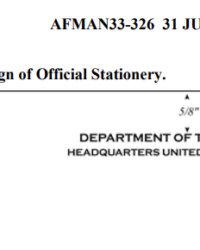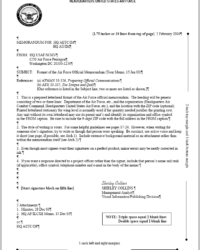Diving into the world of Charlotte Mason education is often described as a breath of fresh air. Instead of dry textbooks and endless worksheets, you find yourself surrounded by living books, nature walks, and the pursuit of knowledge for its own sake. It’s a philosophy that champions short lessons, varied subjects, and the idea that children are born persons, deserving of a rich and broad curriculum. This approach cultivates a love for learning, encouraging curiosity and building robust habits of mind and character, rather than merely stuffing facts into young heads.
However, translating this beautiful philosophy into a practical daily rhythm can sometimes feel a bit overwhelming, especially when you’re just starting out. How do you ensure you cover all the areas Charlotte Mason recommended without feeling like you’re constantly winging it? That’s where the idea of a Charlotte Mason lesson plan template comes into play. It’s not about rigid schedules or stifling creativity, but rather about creating a framework that brings clarity and consistency to your homeschooling journey, allowing the beauty of a living education to unfold naturally.
Crafting Your Charlotte Mason Lesson Plan Template: Principles in Practice
The beauty of a Charlotte Mason lesson plan template lies in its ability to bring structure to a philosophy that values flexibility and the child’s natural pace. Unlike traditional schedules that dictate exact minutes for each subject, a CM template helps you map out the rich feast of knowledge without turning it into a rigid timetable. It serves as a guide, ensuring that you consistently offer a wide range of subjects, from nature study and handicrafts to picture study and classical languages, all delivered in short, engaging lessons that respect a child’s attention span.
When you start to outline your template, think less about a school bell ringing and more about a gentle flow through diverse intellectual and creative pursuits. Key elements you’ll want to include are placeholders for living books across subjects like history, geography, and science, alongside dedicated times for narration—the cornerstone of Mason’s method for knowledge assimilation. Don’t forget slots for copywork, dictation, poetry, and those invaluable “out-of-door” studies that bring learning to life in nature.
As children grow, your template will naturally evolve. For younger students, lessons are even shorter, focusing on observation and foundational skills. As they mature, the depth of study increases, and subjects like formal grammar, logic, and more advanced sciences are introduced, but always through living books and engaging methods. The template helps you visualize this progression, ensuring that each year builds upon the last without gaps or undue pressure.
The real magic of using a template isn’t in its perfection, but in its adaptability. Life happens, and a Charlotte Mason education is designed to integrate with family life, not exist in a vacuum. Your template is a living document, meant to be adjusted as you learn more about your children’s rhythms, interests, and how best to implement the principles of a gentle yet robust education in your home.
Essential Components for Your Template
- Living Books: The heart of the curriculum for every subject.
- Narration: Daily practice to ensure comprehension and assimilation.
- Short Lessons and Varied Subjects: Respecting attention spans and offering a broad curriculum.
- Nature Study and Outdoor Time: Connecting with the natural world and fostering observation skills.
- Handicrafts and Practical Skills: Developing fine motor skills and an appreciation for craftsmanship.
- Picture Study and Composer Study: Cultivating an appreciation for art and music.
- Poetry and Recitation: Nurturing language and memorization.
- Copywork and Dictation: Building strong habits in penmanship and spelling.
Structuring Your Week and Day
Instead of creating a minute-by-minute schedule, consider a weekly rhythm that allows for flexibility. Map out the subjects you aim to cover daily and weekly, perhaps grouping similar subjects on certain days or alternating between academic and more hands-on activities. This ensures all areas are addressed without the stress of feeling behind. For example, you might have certain subjects like math and narration daily, while history or science are explored three times a week, and art or nature study twice.
Think about the flow of your day. Many Charlotte Mason practitioners find success by starting with more demanding subjects when minds are fresh, moving to creative or outdoor pursuits later. This flexible framework, rather than a rigid timetable, allows for the spontaneous teachable moments and the organic unfolding of a child’s education.
The Unseen Benefits of a Thoughtful Template
You might wonder if creating a Charlotte Mason lesson plan template goes against the free-spirited nature of this educational philosophy. On the contrary, a well-thought-out template acts as a silent partner, providing a sense of calm and direction that allows you to fully embrace the joy of learning. It alleviates the mental load of constantly planning from scratch, giving you more energy to be present with your children during lessons and to truly savor those moments of discovery.
Moreover, a template helps ensure you’re offering a truly comprehensive education, preventing the accidental omission of important subjects or practices. It acts as a gentle reminder to include those seemingly small but vital elements, like picture study or poetry, which collectively build a rich inner life for the child. It’s easy, amidst the daily demands, to let certain subjects slip, but a template can be a simple visual cue to keep everything in perspective.
Ultimately, a personalized Charlotte Mason lesson plan template empowers you to maintain consistency in your homeschooling journey, building good habits for both you and your children. It provides a framework for tracking progress, adapting to individual needs, and celebrating the unique pace of learning in your home. It’s not about ticking boxes for the sake of it, but about intentionally cultivating a wide and deep education that resonates with Charlotte Mason’s vision.
Why a Charlotte Mason Lesson Plan Template Becomes Your Ally
- Provides Clarity and Structure: Helps visualize the educational path ahead.
- Reduces Overwhelm and Decision Fatigue: Eliminates daily “what should we do today?” stress.
- Ensures Comprehensive Subject Coverage: Prevents accidental neglect of subjects.
- Fosters Consistency in Habits: Encourages regular engagement with all learning areas.
- Offers Flexibility for Life’s Surprises: A framework that bends without breaking.
- Serves as a Record of Learning: A helpful overview of what has been covered.
Embracing the Charlotte Mason philosophy is a journey filled with wonder and growth, not just for your children, but for you as the educator. By using a thoughtfully constructed template, you’re not just organizing lessons; you’re intentionally curating an environment where minds are nourished, characters are built, and a lifelong love of learning can truly flourish. It’s a tool that supports the beautiful, organic unfolding of an education centered on living ideas.
So, take the time to design a framework that truly serves your family’s unique rhythm and needs. This structure will empower you to approach each day with confidence, knowing you are providing a rich and broad education that respects the whole child, allowing them the space to grow into curious, thoughtful, and well-rounded individuals ready to engage with the world.


